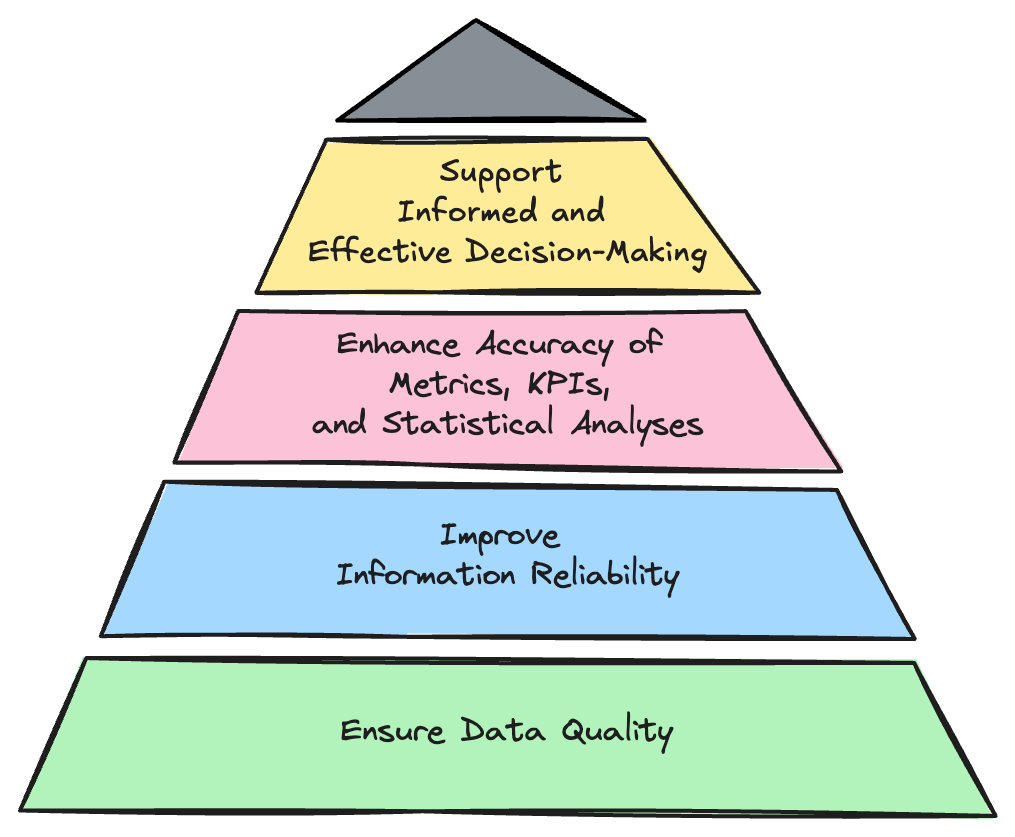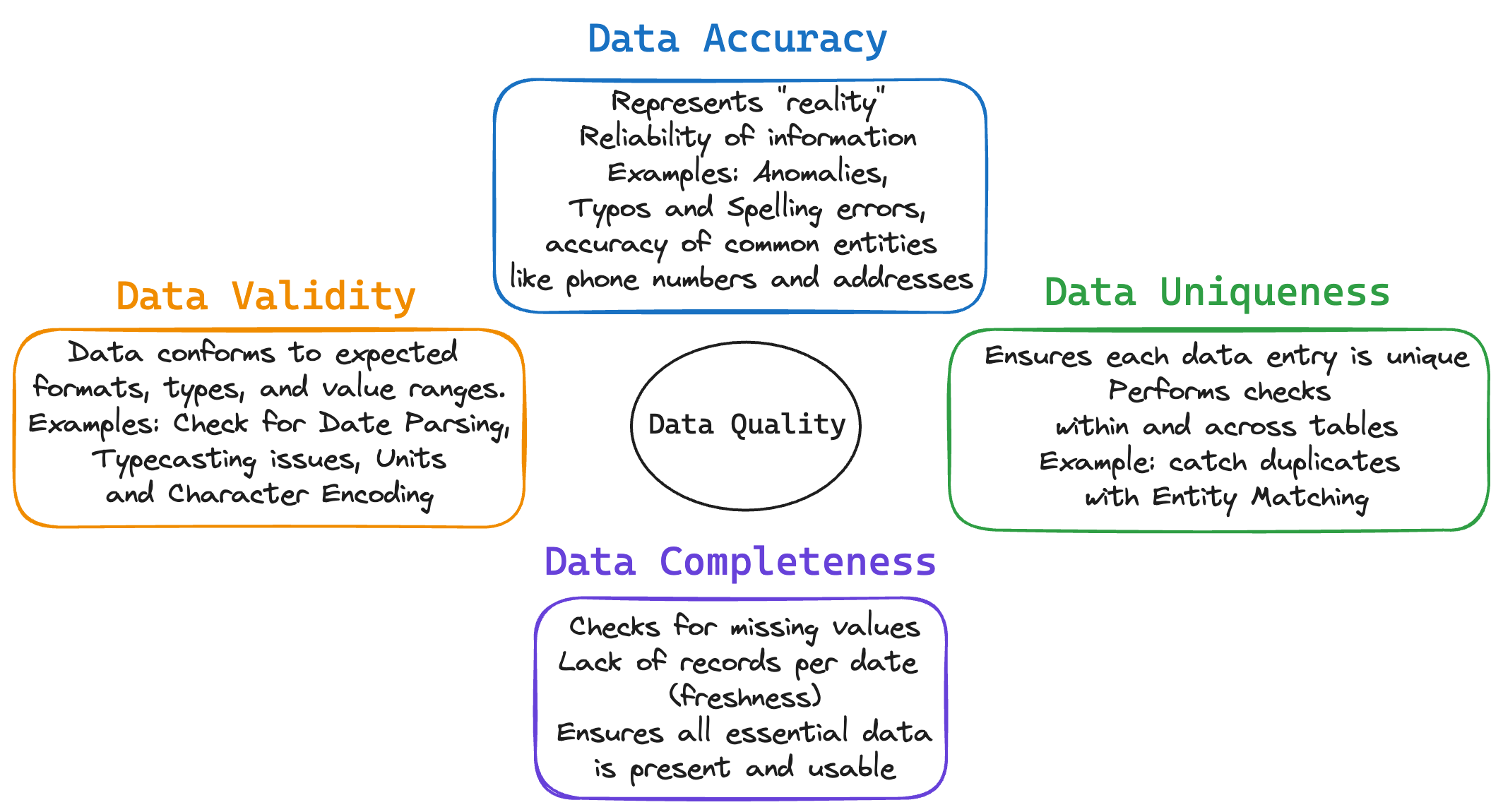The Purpose - Our Mission
Why do we clean data?
Data are used to extract insights and drive action. The rule is simple: “garbage in, garbage out.” If the data are poor, the analysis will be poor too.

Data cleaning is the process of improving data quality. Real-world data are messy. They contain errors, inconsistencies, missing values and outliers. Cleaning finds and fixes these problems, so your conclusions stay reliable and affordable.
What does data cleaning involve?
It has two main stages:
- Tidy the data
Put the data into a clear, normalised structure. Choose a table layout that others can read at a glance. Sometimes you need to reshape the data—see Reshape My Data for details. - Detect and fix errors
Once the data are tidy, look for typical quality issues:
| Quality aspect | What you check | Examples |
|---|---|---|
| Validity | Values follow the right format, type and range. | Parsing and type-casting errors, wrong units, encoding problems. |
| Accuracy | Values reflect reality. | Typos, incorrect phone numbers or outdated addresses. |
| Completeness | Nothing important is missing. | Blank cells, missing dates or stale records. |
| Uniqueness | Each entity appears once. | Duplicate customers with slightly different details. |

How CleanMyExcel.io helps
Traditional cleaning is slow, manual and error-prone, so many teams skip it.
We are data practitioners ourselves. We are building an assistant that:
- Cleans your data automatically.
- Generates a profiling report so you see what changed and why. Food for Thought.
- Lets you keep full control over final fixes.
Spend less time fixing data and more time on the analysis that matters.